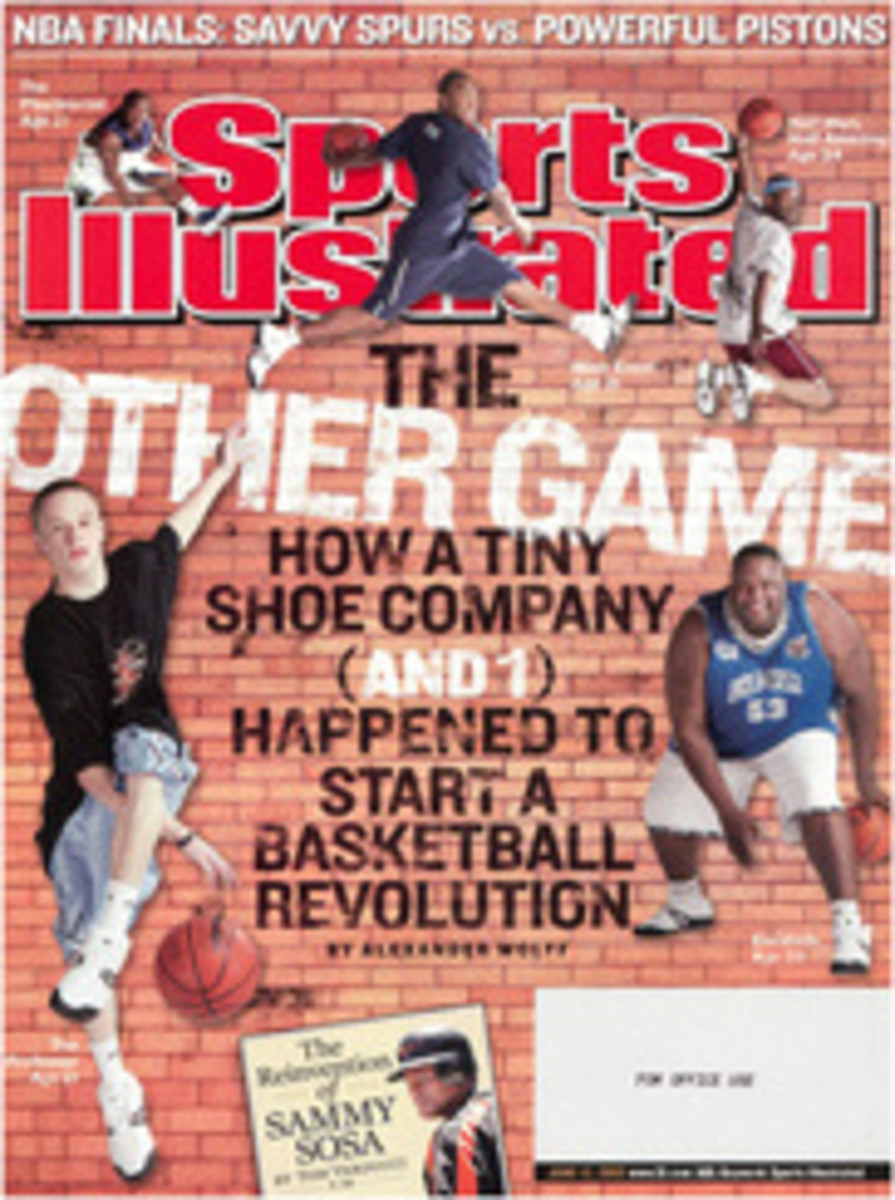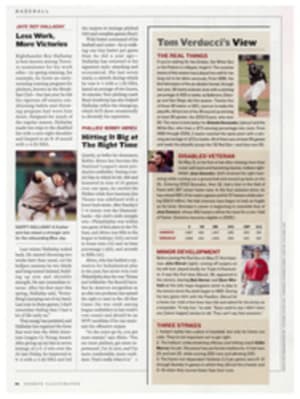
HERBERT WARREN WIND 1916-2005
America's most esteemed golf writer, Herbert Warren Wind--who died on May 30 of pneumonia at 88--was with SPORTS ILLUSTRATED at its birth, writing 111 pieces from 1954 to '60. Before and after that Wind was a staff writer at The New Yorker. He wrote, cowrote or edited 14 books. SI contributor Bill Scheft is more than a fan; he was Wind's nephew.
Thirty-three years ago my uncle came to our house in Beverly, Mass., for his annual summer visit. Uncle Herb, a bachelor whom a colleague once described as "the only guy who still wore a hat in the press box," grew up in Brockton, Mass., but was bound by manners acquired while studying at Cambridge in the 1930s. In the rumpled elegance of year-round tweed, he'd stride to meet you, ramrod-straight, right hand extended, left hand buried in his jacket pocket. The greeting was always the same: "You're looking awfully well today." Even on the phone.
One night he and I were playing Strat-O-Matic, a board game in which ballplayers were represented by computer-generated data cards. When your team was up, you rolled three dice, and the numbers dictated which card you consulted. My 1971 Red Sox were thrashing Uncle Herb's '71 Yankees 12--0 when he suddenly began rummaging through the Strat-O-Matic game box. "What are you looking for, Uncle Herb?" I asked. He put his hand to the side of his mouth and whispered, "I'm trying to find the dice for rain."
In his criminally undercelebrated career as a writer, Herbert Warren Wind never undersold his audience. The amassed wealth of his knowledge became ours. And his lyrical yet humble style left no fingerprints. He is the author of golf's seminal history, The Story of American Golf, and co-author with Ben Hogan of its most influential instruction manual, Five Lessons: The Modern Fundamentals of Golf, which was first published as a series in SI in 1957 and has never been out of print. Long before Tiger Woods was a twinkle in his marketer's eye, Herb Wind chronicled the game's growth with critical respect and detached awe.
On Bobby Jones: "Young Jones knew he was a crackerjack golfer, just as every pretty girl knows she is a pretty girl."
On Torakichi Nakamura: "On his backswing, [he] lurches his whole body way around to the right, thrusting his hands into the air as if to grab the rope of a bell in a belfry."
The words for which we will remember him most, however, are Amen Corner, the phrase he coined in his SI account of Arnold Palmer's victory at the 1958 Masters. Herb took the title of a jazz ditty, grafted it onto what he called "the farthest reach of the Augusta National course"--holes 11 to 13--and into the consciousness of all who played and witnessed Augusta from thereon.
But I really didn't need to come up with words to describe his gifts as America's golf laureate. He gave them to me, to us, in this 1956 description in SI, of Britain's legendary links writer Bernard Darwin:
[He] never tried to bowl his readers over with exhibitions of his brilliance or power, but his writing, modest and restrained as it is, has a quiet magic and a terrific staying power. Though never intended to be literature, it is.
He could have been describing himself, not that he would ever have done that. I can see him now. Faced with this praise, he'd be looking away, trying to find the dice for rain.
B/W PHOTO
SARA BARRETT

